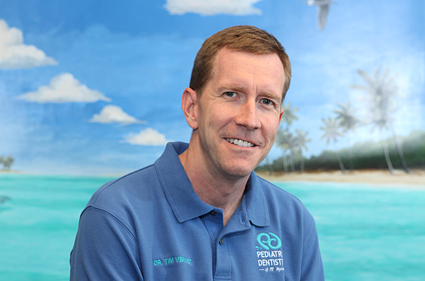
Dr. Tim M. Verwest, DMD named 2016 top dentist
Pediatric Dentistry of Ft. Myers, Dr. Tim M. Verwest, DMD has been selected by the Consumer Research Council of America for inclusion in the 2016[…]

Dentist donates over 15,000 toothbrushes in 2015
Pediatric Dentistry of Ft. Myers, Dr. Tim Verwest, DMD gave away over 15,000 free toothbrushes during dental presentations in 2015. Children in Lee, Collier, and[…]
Caring for your children’s teeth
Start dental visits during infancy The American Academy of Pediatric Dentistry recommends bringing your child to the dentist before his or her first birthday. At[…]
Caring for teeth with braces
Braces are often placed in patients between 10 and 14 years of age to correct crooked or overcrowded teeth. “The benefits of braces are many,”[…]
Baby pacifiers: Pros and cons
Should parents let their infant use a pacifier? According to the Academy of General Dentistry (AGD), there are benefits as well as a downside to[…]
An apple a day may keep the dentist away
Dietary habits of schoolchildren encourage an increase in sugar intake leading to a greater risk of cavities, reports the Academy of General Dentistry. Over a[…]
Use the Tooth Fairy as a teaching tool
In 2013, the Tooth Fairy visited 86 percent of U.S. homes with children who lost a tooth. What kid doesn’t love a magical fairy that[…]
Little evidence to support benefits of oil pulling
If you follow health or celebrity news you’ve likely heard the buzz on the latest natural health craze to hit the internet: Oil Pulling. As[…]

Pediatric Dentistry of Ft. Myers voted “Best of Southwest Florida”
Pediatric Dentistry of Ft. Myers, Dr. Tim M. Verwest, DMD has been voted best pediatric dentist of Southwest Florida 2015 by the Ft. Myers News-Press[…]
How Often Should my Child go to the Dentist?
According to the American Academy of Pediatric Dentistry, checkups are recommended for all children two times a year. Children should be evaluated for cavities and[…]
